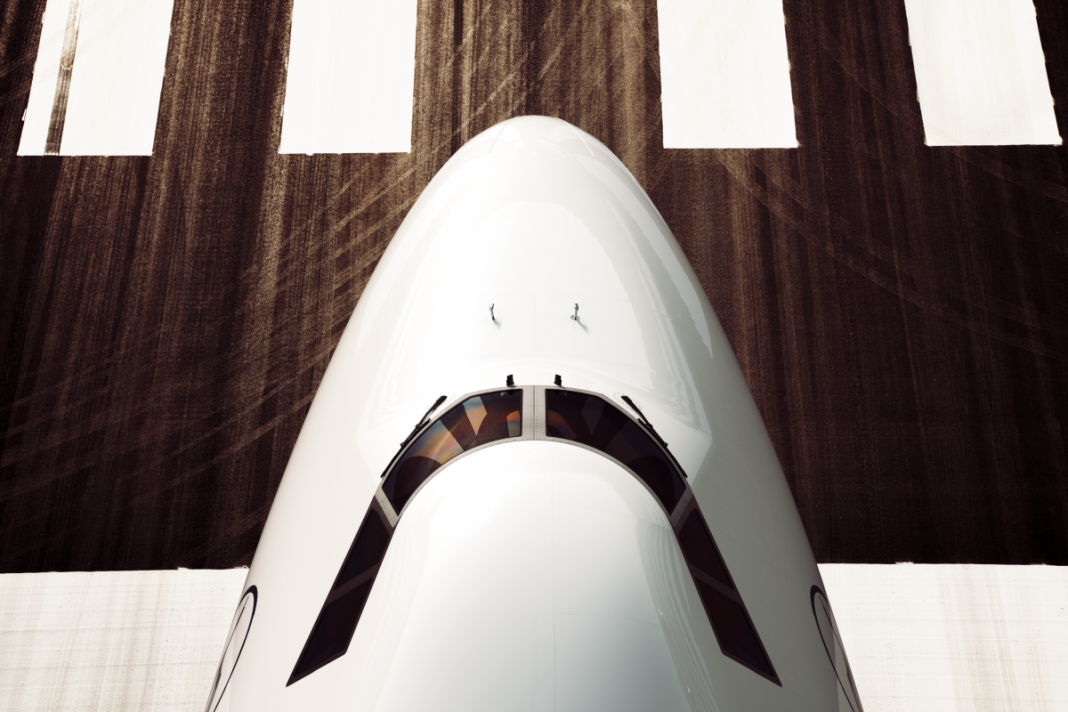Since the late 70’s commercial aircraft have used onboard computers to help simplify the operations within the flight deck. The addition of Flight Management Computers has lessened the workload of the flight crew and has removed the need for engineers and navigators. But did you know that the vast majority of these computers would be mega out-brained by even the simplest of modern smartphones?

The introduction of the FMS
The Flight Management Computer (FMC) is an essential part of modern airliners. In tandem with its regularly updated databases, this hardware integrates the vast majority of the systems and processes necessary to fly, automating a lot of the inflight tasks to reduce the burden on the flight crew.
The computer works with a control display unit, the combination of which is known as the Flight Management System or FMS. This system manages the flight plan, using GPS and inertial navigation systems to determine the aircraft’s position. It is one of the reasons modern airliners no longer need onboard navigators or engineers to get the flight safely to its destination.
The first real FMS was introduced on the Boeing 767, although there had been some other navigational computers around before that. Today, these computer systems are used on aircraft of all shapes and sizes, from the giant A380 down to the Cessna 182.

The thing about these computers is that they were designed quite some time ago, in an age when having a computer at home was a rarity. Despite the rest of the world moving on somewhat, aviation, for the most part, is still very much in the dark ages.
Stay informed: Sign up for our daily aviation news digest.
A memory of less than 200kb
After the development of the 757 and 767, Boeing turned its attention to the 737. Working with Smiths Aerospace (who are now GE Aviation), Boeing developed an FMC as part of a complete update of the 737, producing the 737-300, which was certified in 1984.
At this time, the FMC had a 96k word navigation database onboard, with each word representing two bytes, giving that first 737 a memory of just under 200 KB. Subsequent updates increase this to 192k words in 1988, 288k in 1990, and then to a million in 1992. This means that the very latest of the Classic series would have sported an onboard memory of 2 MB.
By the ’90s, technology in home and business computing had moved on. In fact, the world’s first ‘smartphone’ appeared on the scene in 1992, when IBM released the Simon Personal Communicator. Still, it was a far cry from the smartphones of today, but a step in the right direction.

You would think that, with all the technological advancements that the ’90s brought with them, the FMC would move on a great deal. Sadly, it did not, with the Boeing 737NG released with a capacity of 4 million words – 8 MB.
With such a small capacity, aircraft had to regularly have their databases manually updated, often using flash drives or even floppy disks.
Today, the most modern FMS computers come with much more capacity than this. Still, there are only a limited number of aircraft that have been updated to anything like the brainpower of your typical iPhone. Many, many aircraft are still functioning on some very 90’s technology.
Which aircraft have the memory of a goldfish?
The vast majority of commercial aircraft flying today have a memory that is a mere drop in the ocean compared to today’s modern smartphone. The worst offenders are those which haven’t been radically overhauled in recent memory.
Of the Boeing 737NG, Cirium estimates that over 6,000 remain in active service (although some are currently stored). According to research by Mitre.org, these mostly fly with either 8 or 16 MB onboard. The 60 or so 737-200s that are still alive are likely flying with no more than 400 KB of memory.

Some Airbus A320s, those still on the Thales FMS1, have a capacity of just 200kw, or 400 KB onboard. Others in the fleet will. Have upgraded to the FMS2, which ranges from 5 – 7 MB in capacity.
Other aircraft with notably small brains include the 757 and 767, of which models are flying with between 400 KB and 4 MB of storage. A handful have been upgraded to the Honeywell Pegasus 2009 FMS, which boasts 7.5 MB of storage.
As for the Queen of the Skies, the most modern 747 to be produced – the 747-8 – was born with an impressive 100 MB of memory in its FMS. However, older 747s had a much smaller setup. Mitre estimates that there are (or were) around 97 Boeing 747-400s currently flying with 2 MB or less of memory.

Depending on your smartphone, that could be 30, 60, or even more than 100 times smaller than the memory you carry around in your pocket every day.
Are you surprised by how little memory an aircraft has? Let us know your thoughts in the comments.
[ad_2]
Source link


